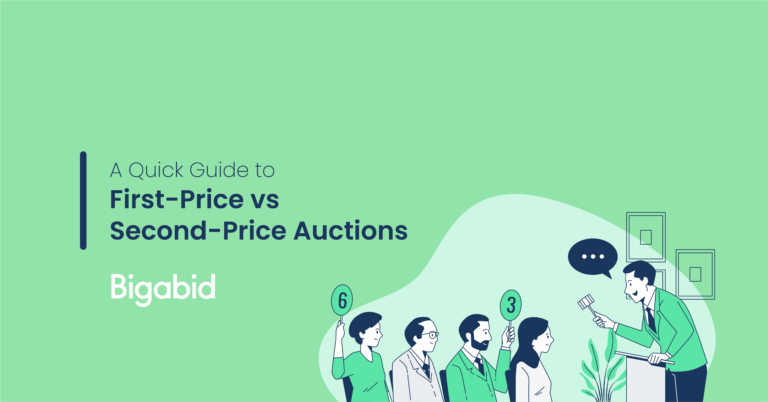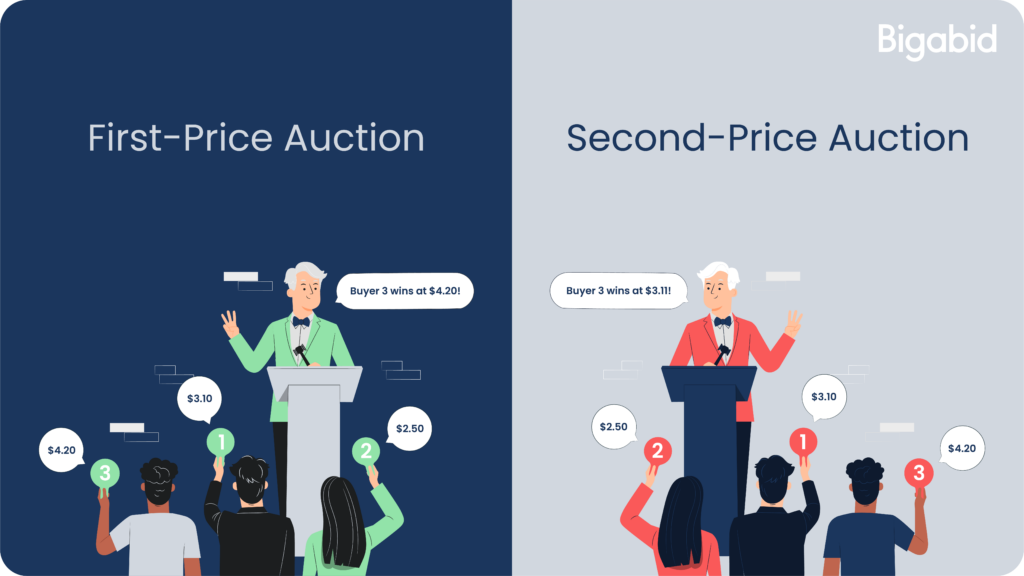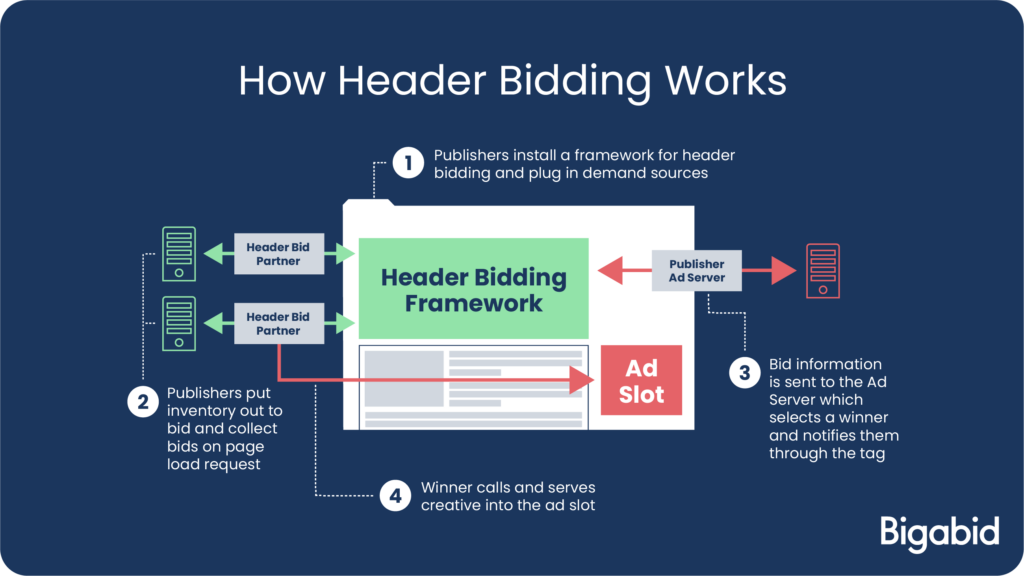
In recent years, programmatic advertising has gone through rapid changes. With the onset of RTB and Header-Bidding technologies, auctions have grown more complex. If Publishers and buyers haven’t opted for fixed or pre-auction deals, the auction will be dynamic, where buyers bid for advertising inventory at different rates. This article will expose the benefits and pitfalls of both.
In first-price auctions, buyers participate in the auction simultaneously, and the highest bidder wins. The winning bidder pays the price per thousand ad impressions (CPM) they had bid during the auction. In first-price auctions, publishers and advertisers can see the actual value for each 1000 ad impressions and accurately measure the ROI. First-price auctions also provide a clear auction outlook where bidders know how much they offerf for a given inventory. In essence, first-price auctions are more transparent.
Read about Bigabid’s transparency-first core value in Partnering with Transparency
For more clarity, let’s look at an example of a first-price auction:
Three buyers are bidding in the auction, where each sets an exact price of how much they will pay for 1000 ad impressions.
With the highest bid for this auction at $4.20, buyer 2 wins the auction and will pay the publisher $4 per 1000 ad impressions.
In second-price auctions, the highest bidder still wins, but the final price will be slightly different. The final price is set by adding .01$ to the second-highest bidder’s bid.
Let’s look at a second-price auction example:
Three buyers are bidding in the auction. Their bids are:
The highest bid in this auction is still 4.20$. Buyer 1 wins the auction again, but this time they will only pay 3.11$ (the second bidder’s price of 3.10f$+ 0.01$) for each 1000 ad impressions.

Programmatic header bidding is a true auction. Publishers sell their inventory through multiple ad exchanges (auction houses), giving multiple demand-side Partners (buying agents) the option to bid on that inventory (lots) simultaneously. And unlike the set prices in a programmatic waterfall, in programmatic header-bidding, the highest bid always wins.
Want more details? The core of head-bidding is the header code that publishers place in the header. Each time someone visits an app, it requests an ad to be served. The server then sends the request to an SSP (supply-side platform), which allows publishers to sell inventory programmatically. Then the SSP pushes the request forward to an ad exchange, the marketplace that serves as a trading center between supply and demand partners. The ad exchange then forwards it to a DSP (demand-side platform), the advertiser’s ace in the pocket ML (machine-learning) used to manage their user acquisition or retargeting campaigns. The DSP analyzes all the relevant data and matches the inventory to the advertiser via precision targeting. Finally, the Advertisers bid on their targeted audience. The one who bids the highest price wins. This all happens, more or less, simultaneously.

Since header bidding reaches multiple demand partners in RTB (real-time bidding), publishers maximize their yield for their ad inventory by selling it at the highest price. The nitty-gritty is that header bidding allows publishers to offer their premium ad inventory without the risk of underselling it.
Learn even more about Header-Bidding.
What makes inventory premium? Learn more about ad creatives in Creative Personalization.
With the introduction of Header-Bidding technologies, publishers can now allow multiple ad exchanges (SSPs) to bid on their inventory. In such a complex and dynamic programmatic world, the operational inefficiency of second-price auctions is problematic. Also, with less transparency, SSPs can add hidden fees to second-price auctions.
Essentially, Header-Bidding has flipped the script in favor of first-price auctions to allow buyers to see and assess a much greater amount of inventory all at once. With this change, every offer from buyers can compete in the same unified auction, with inventory that is directly negotiated with advertisers.
Google’s AdSense had always used a second-price auction model, where the price paid by an advertiser was less than what they bid in the auction, but now, Google has shifted to the first-price auction model.
In short, first-price auctions:
Mainly, advertisers will pay less for their ad inventory in a second-price auction.
Besides helping advertisers not overpay, second-price auctions provide useful insights into the competition, which can help optimize future bids for ad inventory from a publisher. Though first-price auctions work better with header-bidding allowing for simultaneous bidding and more competitive bids, first-price auctions can motivate buyers to submit lower bids to save money, which is called bid shading.
Bid shading is what advertisers do to try to win an impression at the lowest possible price. To do this, advertisers must try to predict the market value for a given impression. The problem is bid shading can lower the publishers’ ad revenue by up to 20%.
Bid shading is often countered by setting a floor price. But in First-Price Auctions, floor prices have no impact on the final price (clearing price). Floor prices had been used for storing inventory. The trend toward first-price auctions has publishers reconsidering how they use floor prices to protect their inventory. To combat this in AdSense, Google has released unified pricing rules that help publishers optimize floor prices.
With the onset of header-bidding, the programmatic world is trending toward first-price auctions, but it’s still crucial that both publishers and advertisers understand the dynamics between them. The ultimate goal is to create an even playing field that is operationally effective with multiple exchanges and auctions. At Bigabid, we feel that both publishers and advertisers should strive for ROI optimization. Our technologies are focused on transparency and optimization. We believe the transition from second-price auctions to first-price auctions is integral to that goal. If you’re looking for a transparent solution based on optimizing your ROI, get in touch.
From the mid-1600s to the mid-1700s, auction technology progressed much like waterfall has to header bidding in recent times. Fortunately, today things are progressing much faster. As a second-generation DSP, Bigabid is at the forefront of programmatic technology, an exciting place to be as we are devoted to helping our industry improve and evolve. Get in touch to be part of this revolution while improving your campaign ROIs!